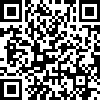比赛规则:
1. 将发布的英文原文译为中文,扫描文末二维码提交译文。
2. 每位参赛者只能提交一次作业。【在截稿前请不要将译文发至留言评论处,发至该处的译文不能参与评比。】
3. 作业请勿以图片形式提交。【图片将无法参与评比,如果超过字数,请到微信公号留言。】
4. 2022年3月22日0点截止参赛,周末公布编辑部筛选出的优秀译文接受读者投票。
5. 点评专家将结合读者投票选出本期擂台的优胜译文,在微信公众号公布结果及点评文。
6. 优胜者将获得《英语世界》数字刊14天体验会员码。
7. 比赛未尽事宜概以本刊最终解释为准。
比赛原文:
Review: Hidden Atrocities: Japanese Germ Warfare and American Obstruction of Justice at the Tokyo Trial
Imperial Japan’s germ-warfare program, with its brutal experiments, numerous nameless victims, and many atrocities against Chinese civilian populations, disappeared from history at the end of WWII, despite the American-directed Tokyo War Crimes Trial in 1946 and later Soviet proceedings. The Japanese had destroyed records, killed witnesses, and razed research sites, making prosecution very difficult. U.S. Military Intelligence was not inclined to push to make public what had happened since they wanted to take advantage of what the Japanese knew about biological warfare as the Soviet Union loomed as a new opponent of the West. Japan was seen as a potential powerful ally in the emerging cold war environment, meaning foreign policy and national security trumped holding an important new ally to account. The U.S. dismissed Soviet efforts at prosecution as propaganda. To this day silence and denial have dominated the gruesome facts. Hidden Atrocities provides a long overdue scholarly remedy. The victims now have a powerful voice to contend with those who decided to bury their right to justice. Thanks to Jeanne Guillemin, the reasons this indefensible omission occurred are lucidly and skillfully presented.
– Arthur Caplan, founding director, New York University School of Medicine Division of Bioethics









